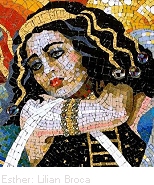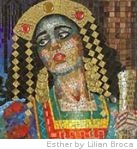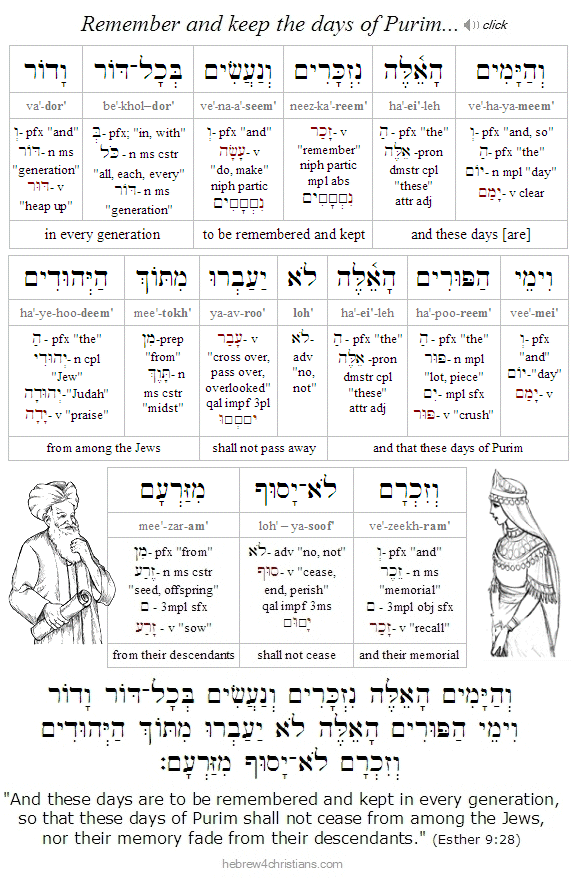|
|
|
|
 |
 |
 |
 |
 |
 |
|
Printer-Friendly PDF >>
|
|
|
|
Purim - Feast of Lots
|
|
|
Celebrating our Deliverance
|
|
|
|
By John J Parsons
www.hebrew4christians.com
|
|
|
 |
 |
|
THE STORY GOES BACK to king Nebuchadnezzar of Babylon (630-562 BC), who, on account of the chronic apostasy of the Jews, became "the rod of God's wrath" by conquering the land of Judah, besieging Jerusalem, burning the Temple of Solomon, and eventually carrying the Jews off to captivity. This became known as the "Babylonian Exile" (2 Kings 25:1-17), and among the Jews who were deported from Judah to Babylon was a young man named Daniel (the prophet), who later served in the court of Nebuchadnezzar.
Nebuchadnezzar allowed the exiled Jews to settle along the banks of the Euphrates River and to establish their own centers of learning and worship. In fact, some of the greatest Jewish learning ever produced - including the Babylonian Talmud (Bavli) - would come from those who were exiled in ancient Babylon.
In time King Nebuchadnezzar died and his son ruled. Later his grandson Belshazzar assumed the throne. This is that king Belshazzar mentioned in Daniel 5 who threw a feast and drank from the holy vessels looted by his grandfather from Solomon's Temple. While he was reveling and praising the "gods of gold and silver" he and his guests saw a mysterious hand writing a message on the wall:
 |
"MENE MENE TEKEL UFARSIN"
In his consternation upon seeing the disembodied hand write these words, Belshazzar vainly sought for an interpretation from his soothsayers. Finally the Hebrew prophet Daniel was dispatched who interpreted the writing to mean both the end of King Belshazzar's reign and of the Jewish people's exile in Babylon.
Daniel's words proved true, of course. That very night the Medes (led by Darius I) and the Persians (led by Cyrus) jointly attacked Babylonia and King Belshazzar was killed. Initially Darius was made emperor, but a year later, Cyrus became the undisputed emperor of the vast Medo-Persian empire.
King Cyrus was kindly disposed to the Jews and even decreed that they should return to Judah to rebuild the Temple of the LORD. In this regard, Cyrus was a gentile Messiah of the Jewish people who, like Moses, was raised up by God Himself to enable the Jews return to the land of promise (in fact, 200 years before Isaiah had named Cyrus as the one who would come to rescue God's people [Isaiah 45:1,13]). However, even though the leaders of Israel did in fact return to Jerusalem (thus ending the 70 years of exile as prophesied by Jeremiah), most of the Jews chose to remain in Persia.
After Cyrus' death (369 BC?), Ahasuerus (Achashverosh) became ruler of the Medo-Persian empire. Like Belshazzar before him, Ahasuerus made the mistake of partying with the holy vessels from Solomon's Temple (which apparently had not been restored to the Jews by King Cyrus). However, according to the Jewish sages, instead of the Persians being judged for this act, the Jews themselves were to be judged - through the machinations of a particularly nasty prime minister of Ahasuerus named Haman. And thus begins the story of the book of Esther....
|
 |
 |
|
The lot is cast into the lap, but its every decision is from the LORD.
Proverbs 16:33
|
 |
 |
|
Much is made over the fact that the book of Esther is the only book of the Tanakh that does not explicitly mention the Name of God. However, the idea of God's sovereignty and hashgachah (divine providence) is clearly implied throughout the entire story. In light of this nes nistar, or "hidden miracle" of the Jew's deliverance, Esther and Mordecai ordained that Purim should be observed as a "day of feasting and merrymaking" and of sending gifts to the poor (Esther 9:22,28). By the way, Purim is so named because Haman had cast lots (purim) to determine the day on which to destroy the Jews.

Ironically, God demonstrates that He is Master over the outcome of chance throughout the entire narrative.
The Dates of Purim
For the Diaspora, Purim is celebrated on the 14th of Adar, the day after Haman's roll of the dice indicated that the 13th of Adar was most "propitious" for the extermination of the Jews. It is celebrated on the day after since it was on this day that the Jews successfully fended off their enemies and experienced the joy of deliverance. Shushan Purim is observed in Israel a day later still (on Adar 15th). The reason for these different dates of the festival of Purim is that the Jews of Shushan waged war on both the 13th and the 14th of Adar and observed the 15th as a day of festivity and rejoicing, but in the other provinces the Jews waged war on the 13th and observed the 14th as the day of rejoicing. Jews in Israel identify with the Jews of Shushan, and hence its celebration is called "Shushan Purim."
On leap years, Purim is celebrated a month later, during Adar II (though Adar 14th is still observed during leap years as Purim Katan, or "little Purim"). In modern times, many cities have celebrated local "Purims", also called "Purim Katan", all commemorating the deliverance of the local community from a particular antisemitic ruler or group.
Purim is a time of celebration on account of God's victory and deliverance for His people. Hooray for Mordecai! -- and may Haman and his kind forever be foiled in their attempts to undermine those who call upon the Name of the LORD God of Israel. Amen.
Hebrew Blessings said during Purim
Purim is actually considered a minor holiday on the Jewish religious calendar, which means that it is not attended with the same halakhic restrictions observed on other holidays. The primary commandment of Purim is to recite three blessings before hearing Megillat Ester recited during synagogue services (one in the evening and another in the morning). The three preliminary blessings are as follows:
|
 |
 |
 |
 |
 |
 |
 |
 |
 |
|
 |
 |
 |
|
 |
|
|
|
 |
|
|
|
|
|
Blessed art Thou, LORD our God, Master of the universe, who sanctified us with His commandments and commanded us regarding the reading of the Megillah. Amen.
|
|
|
|
 |
|
|
|
 |
|
|
|
|
|
Blessed art Thou, LORD our God, Master of the universe, who performed miracles for our fathers in those days at this time. Amen.
|
|
|
|
 |
|
|
|
 |
|
|
|
|
|
Blessed art Thou, LORD our God, Master of the universe,
who has kept us alive and has sustained us, and brought us to this season. Amen.
|
|
|
|
After these blessings are recited, the scroll of Esther (Megillat Ester) is read. During the reading of the Megillah, everyone shouts "boo!" (or makes otherwise loud noises) when the name "Haman" is heard, while they wildly cheer whenever the name "Mordecai" is heard. Grogers (noise makers) and other devices are often employed. It is a wild experience and a lot of fun!
At the end of the reading, an additional blessing regarding God's vengeance is often recited.
|
|
|
|
Purim Customs (minhagim)
|
|
|
|
Today Purim is a happy festival with an almost carnival atmosphere. It is a time to remember that "God worketh all things together for good" for those who are called according to His purposes. It is also a time of special parties and plays put on by children at the synagogue (if you haven't seen a little girl dressed up as Queen Esther and a little boy fumfer his lines as King Ahasuerus, you are missing out on a real treat!).
In addition to reciting the Hebrew blessings and reading the book of Esther, there are several customs that are associated with Purim, including:
- Fun-filled synagogue services - Services at the synagogue are especially fun during Purim. Children often present a dramatic presentation of the story of Esther, and during the reading of the book itself everyone shouts "boo!" or makes otherwise loud noises when the name "Haman" is heard, while they wildly cheer whenever the name "Mordechai" is heard.
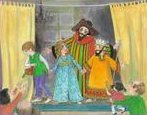
Groggers (noise makers) and other devices are often employed and often there is a sumptuous oneg after the service where you can fatten up on "Hamantaschen" (ūöū×ū¤ųŠūśūÉųĘū®ū¤), or "Haman's Ears" -- those delicious three-sided pastries filled with poppy seeds or other fillings. Some people also dress up with costumes during Purim services.
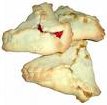
- Sending gifts to others (Mishloach Manot) - Normally these sorts of gifts ("portions") are pre-cooked foods or pastries such as Hamentash ("Haman's Hat"). Usually two such "portions" are sent for the occasion. Many people deliver these treats directly after the erev Purim synagogue service.
- Giving Tzedakah (charity) to the poor (Matanot l'Evyonim) - This is often considered the most significant mitvzah to do for the holiday. Tzedakah is a way of expressing our gratitude to God for the gift of our deliverance.
- The Festive Purim Meal (Seudat Purim) - It is a mitzvah to eat a special Purim meal (seudat Purim), usually after minchah (afternoon) services on the 14th. Many children dress up in elaborate masks and costumes for the supper. Like other holidays we light Yom Tov candles and recite kiddush before partaking of the meal (Mishna Berura 695:9). Often an oversized challah with raisins is baked for the occasion. Since Purim is a time of irony and fun, some people put on a farcical "Purim Seder," with a "Purim Rabbi" officiating the ceremonial meal and generally making a mess of things. It is also customary to eat festive foods at this time, especially the delicious "Hamantaschen" (ūöū×ū¤ųŠūśūÉųĘū®ū¤), or "Haman's Ears."
Note: According to the Talmud (Megillah 7a), you should drink so much wine during the meal that you can no longer coherently know the difference between 'Cursed is Haman,' and 'Blessed is Mordechai.' This is sometimes called "ad lo yadah" - "until you don't know...." Needless to say this tradition is not a requirement and is in fact not recommended for the holiday celebration.
|
|
|
Yeshua and Purim
|
|
 |
 |
|
Did Yeshua (Jesus) celebrate Purim? It is written in John chapter 5 that He was in Jerusalem for an unnamed feast, but scholars have questioned which feast this was. Some have rejected the idea that this was Purim because it is considered a "minor" feast and not one of the shelosh regalim (three pilgrimage festivals). However, we know that Jesus celebrated Chanukah (John 10:22) which is also another "minor" feast, so a priori that is not a worthy objection. According to Lambert Dolphin's research on this question, chronologically the only feast that John could be referring to is Purim, since it is said to have fallen on Shabbat (John 5:9), but the only feast that occurred on Shabbat between the years of 25-35 CE was in fact Purim (in the year 28 CE). But why was it referred to as an unnamed feast? Perhaps the Spirit of God intentionally left out the name of the feast because the Name of the LORD was likewise deliberately left out of the Book of Esther.
|
 |
 |
 |
|
Purim and Yom Kippur
|
|
|
|
According to sages, any day that is marked by special deliverance by the LORD can be called a "Purim." In fact, Yom Kippur (the Day of Atonement) is also known as Yom Kippurim in the Tanakh, which can be read as Yom Ke-Purim, a "day like Purim." Thus the day on which Yeshua sacrificed Himself on the cross is the greatest Purim of all, since through this we are eternally delivered from the hands of our enemies. This connection is brought out by the following vignette:
In the dark days of Purim, 1941, in the Warsaw ghetto, Rabbi Kalonymos Kalman of Piasetzna sat at the head of the table, surrounded by a group of gaunt and despondent chassidim, who were starting forlornly into nothingness. With death hanging over their heads, how could anyone rejoice? Said the rebbe: In the Zohar it is written that Yom Kippurim means Yom kePurim, "a day just like Purim." That is to say, just as on Yom Kippur - whether you like it or not - you must fast on orders of the Holy One, blessed be He; so you must rejoice on Purim. Even if Satan runs amok in the streets, you have to be happy; it is the will of God. (Finkel: Essence of the Holy Days, 1993).
|
|
|
The Prophetic Significance of Purim
|
|
 |
 |
|
Purim is a happy, fun-filled holiday that rejoices over the irresistible grace of the God of Israel and His providential care. And while we should rejoice over the deliverance of the LORD in times past, Purim has a prophetic dimension that yet is to be fulfilled in acharit hayamim (the end of days).
The Midrash Esther says that Purim, unlike many of the other holidays, will be celebrated even after the final redemption after the End of Days. This is because the story of Purim -- i.e., God's covenantal faithfulness and defense of His people -- will be magnified in the deliverance that leads to the establishment of the Messianic Kingdom upon the earth. Indeed, the Second Coming of the Messiah will be regarded as the final fulfillment of Purim!
Haman is clearly a type of Anti-Messiah (satan) who desires to see the Jewish people exterminated once and for all. In the New Testament we know that there is soon coming one who is the embodiment of this "spirit of Haman," and of Hitler, and of all the other anti-Jewish murderers throughout the ages. This one is the "man of sin" or the Messiah of Evil (2 Thess. 2:3), who will broker peace in the Middle East and feign to be friendly to Israel, but who will ultimately betray her and seek to have her utterly destroyed.

Satan's final attempt to provide the ultimate "Final Solution" will be foiled, just as Haman's attempt was foiled. His plan will boomerang upon his own head, just as Haman's plan boomeranged upon him. And he and his children will all hang from the gallows, just as Haman and his children did.
When Yeshua returns at the end of the Great Tribulation, He will destroy the Messiah of Evil by the Word of His Power and physically deliver Israel as her rightful King and Lord. Israel's long-awaited Mashiach ben David will be clearly revealed and understood to be Mashiach ben Yosef Himself. Then, and only then, will Israel experience the true deliverance and salvation of God -- and the rejoicing of that Purim will be like none other!
Purim HaGadol...
Here is a vision of that coming Purim:
"Then I saw heaven opened, and behold, a white horse! The one sitting on it is called Faithful and True (ūĀųČūÉų▒ū×ųĖū¤ ūĢų░ūÖųĖū®ūüųĖū©), and in righteousness he judges and makes war. His eyes are like a flame of fire, and on his head are many diadems, and he has a Name written that no one knows but himself (ū®ūüųĄūØ ūøų╝ųĖū¬ūĢų╝ūæ ūÉų▓ū®ūüųČū© ū£ūÉųŠūÖųĖūōųĘūó ūÉų┤ūÖū®ūü ūøų╝ų┤ūÖ ūÉų┤ūØųŠūöūĢų╝ūÉ ū£ų░ūæųĘūōų╝ūĢų╣). He is clothed in a robe dipped in blood, and the Name by which he is called is 'the Word of God' (ūōų╝ų░ūæųĘū© ūöųĖūÉų▒ū£ūöų┤ūÖūØ). And the armies of heaven, arrayed in fine linen, white and pure, were following him on white horses. From His mouth comes a sharp sword with which to strike down the nations, and He will rule them with a rod of iron. And He will tread the winepress of the fierce fury of the wrath of God, the Ruler over All, the LORD God Almighty (ūÖų░ūöūĢųĖūö ūÉų▒ū£ūöųĄūÖ ū”ų░ūæųĖūÉūĢų╣ū¬). On his robe and on his thigh he has a Name written, the King of kings (ū×ųČū£ųČūÜų░ ūöųĘū×ų╝ų░ū£ųĖūøų┤ūÖūØ) and the Lord of lords (ūÉų▓ūōūĀųĄūÖ ūöųĖūÉų▓ūōūĀų┤ūÖūØ). And with the breath of his lips He will slay the wicked" (Rev. 19:11-16).
May that day come speedily, and in our time... Amen!
Hebrew Lesson:
Esther 9:28 reading (click for audio):
For Further Study:
|
|




